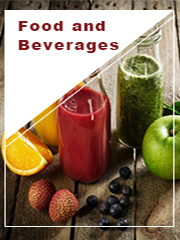Report overview
Non-therapeutic antibiotics are administered at sub therapeutic levels in order to increase feed conversion rate. In order to have better margins livestock farmers administer the antibiotics in very low quantity through water especially in poultry and swine. Compound feed manufacturers and feed premix manufacturers are also adding antibiotics to make sure, their feed and ingredients give maximum profit to its buyers. However, such practice has led to development of antibiotic resistant pathogens and hence are being banned in many countries and also controversy on its uses are increasing progressively. Thus the growth of antibiotics in many countries are being plateaued out and in others growth may prematurely can plateaued or even drastically fall.
This report aims to provide a comprehensive presentation of the global market for Non-Therapeutic Antibiotics for Food Animals, with both quantitative and qualitative analysis, to help readers develop business/growth strategies, assess the market competitive situation, analyze their position in the current marketplace, and make informed business decisions regarding Non-Therapeutic Antibiotics for Food Animals. This report contains market size and forecasts of Non-Therapeutic Antibiotics for Food Animals in global, including the following market information:
Global Non-Therapeutic Antibiotics for Food Animals Market Revenue, 2018-2023, 2024-2029, ($ millions)
Global Non-Therapeutic Antibiotics for Food Animals Market Sales, 2018-2023, 2024-2029, (K Units)
Global top five Non-Therapeutic Antibiotics for Food Animals companies in 2022 (%)
The global Non-Therapeutic Antibiotics for Food Animals market was valued at US$ million in 2022 and is projected to reach US$ million by 2029, at a CAGR of % during the forecast period. The influence of COVID-19 and the Russia-Ukraine War were considered while estimating market sizes.
Livestock production growth as the demand for meat is increasing in most parts of the world has resulted in increased uses of antibiotic at sub therapeutic level which has increased the profitability of ventures. Feed cost fluctuations and tighter margins also necessitates the uses of such ingredients which is directly related to productivity.
Thus, the demand is expected to remain stable but govt regulations is the biggest hindrance although companies lobby their interest in the legislature to delay such measures as far as possible but long-term growth doesn?t look promising esp. in developed nations and in countries where the food department is very strict.
We surveyed the Non-Therapeutic Antibiotics for Food Animals manufacturers, suppliers, distributors and industry experts on this industry, involving the sales, revenue, demand, price change, product type, recent development and plan, industry trends, drivers, challenges, obstacles, and potential risks.
Total Market by Segment:
Global Non-Therapeutic Antibiotics for Food Animals Market, by Type, 2018-2023, 2024-2029 ($ Millions) & (K Units)
Global Non-Therapeutic Antibiotics for Food Animals Market Segment Percentages, by Type, 2022 (%)
Oxytetracyclines
Tylosin
Ampicillin and Amoxycillin
Gentamicin
Sulfaquinoxaline
Salinomycin
Bacitracin
Others
Global Non-Therapeutic Antibiotics for Food Animals Market, by Application, 2018-2023, 2024-2029 ($ Millions) & (K Units)
Global Non-Therapeutic Antibiotics for Food Animals Market Segment Percentages, by Application, 2022 (%)
Cattle Feed
Poultry Feed
Swine Feed
Aqua Feed
Others
Global Non-Therapeutic Antibiotics for Food Animals Market, By Region and Country, 2018-2023, 2024-2029 ($ Millions) & (K Units)
Global Non-Therapeutic Antibiotics for Food Animals Market Segment Percentages, By Region and Country, 2022 (%)
North America
US
Canada
Mexico
Europe
Germany
France
U.K.
Italy
Russia
Nordic Countries
Benelux
Rest of Europe
Asia
China
Japan
South Korea
Southeast Asia
India
Rest of Asia
South America
Brazil
Argentina
Rest of South America
Middle East & Africa
Turkey
Israel
Saudi Arabia
UAE
Rest of Middle East & Africa
Competitor Analysis
The report also provides analysis of leading market participants including:
Key companies Non-Therapeutic Antibiotics for Food Animals revenues in global market, 2018-2023 (Estimated), ($ millions)
Key companies Non-Therapeutic Antibiotics for Food Animals revenues share in global market, 2022 (%)
Key companies Non-Therapeutic Antibiotics for Food Animals sales in global market, 2018-2023 (Estimated), (K Units)
Key companies Non-Therapeutic Antibiotics for Food Animals sales share in global market, 2022 (%)
Further, the report presents profiles of competitors in the market, key players include:
AG Zoetis, Inc.
Boehringer Ingelheim GmbH
Eli Lilly and Company
Merck & Co., Inc.
Bayer AG
AG Sanofi
Ceva Sante Animale
Virbac
Vetoquinol S.A.
Dechra Pharmaceuticals
Outline of Major Chapters:
Chapter 1: Introduces the definition of Non-Therapeutic Antibiotics for Food Animals, market overview.
Chapter 2: Global Non-Therapeutic Antibiotics for Food Animals market size in revenue and volume.
Chapter 3: Detailed analysis of Non-Therapeutic Antibiotics for Food Animals manufacturers competitive landscape, price, sales and revenue market share, latest development plan, merger, and acquisition information, etc.
Chapter 4: Provides the analysis of various market segments by type, covering the market size and development potential of each market segment, to help readers find the blue ocean market in different market segments.
Chapter 5: Provides the analysis of various market segments by application, covering the market size and development potential of each market segment, to help readers find the blue ocean market in different downstream markets.
Chapter 6: Sales of Non-Therapeutic Antibiotics for Food Animals in regional level and country level. It provides a quantitative analysis of the market size and development potential of each region and its main countries and introduces the market development, future development prospects, market space of each country in the world.
Chapter 7: Provides profiles of key players, introducing the basic situation of the main companies in the market in detail, including product sales, revenue, price, gross margin, product introduction, recent development, etc.
Chapter 8: Global Non-Therapeutic Antibiotics for Food Animals capacity by region & country.
Chapter 9: Introduces the market dynamics, latest developments of the market, the driving factors and restrictive factors of the market, the challenges and risks faced by manufacturers in the industry, and the analysis of relevant policies in the industry.
Chapter 10: Analysis of industrial chain, including the upstream and downstream of the industry.
Chapter 11: The main points and conclusions of the report.
